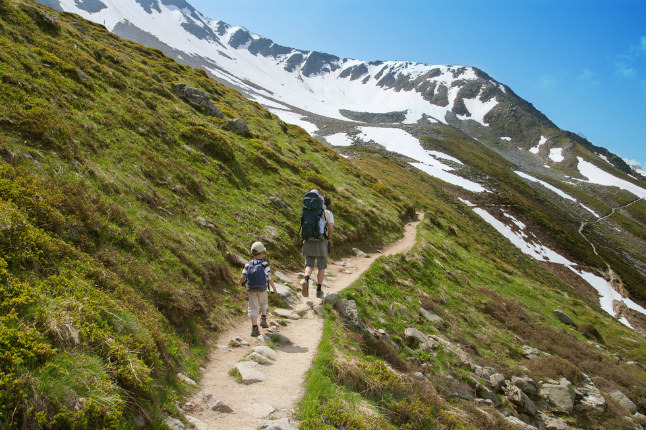How To Teach Kids The Leave No Trace Principles
Whether you love short hikes on local trails, taking on epic thru-hikes or camping in the middle of remote wilderness, it's safe to say that you enjoy the outdoors and chances are you're familiar with the Leave No Trace principles. Although you may follow them diligently, you've likely seen the result of those who haven't taken the guide to heart.
That's where T.J. and Pat Beasley come in. They are one of four teams of Subaru/Leave No Trace Traveling Trainers that travel the country (in Subarus) and teach people how to responsibly enjoy the outdoors. Sharing tips on how to enjoy and preserve the natural environment is a noble cause, but they can't reach everyone.
As they're working hard to spread the word, they shared some tips for parents of young children who want to pass on good Leave No Trace habits to their kids.
Start early and young—Whether it's in the stroller or on your back, take your littlest ones into nature from the very beginning. Make it a part of their life, something that is ingrained from their first step. When old enough, get them enrolled in Boy or Girl Scout programs, local YMCA camps or other programs that implement the Leave No Trace principles.
Let them get dirty—Kids developmentally explore with all five senses, so let them get dirty and learn to enjoy the challenges that nature offers. Let them play, fail and succeed.
Give them a special place—Children need time alone to reset and refocus. Natural spaces, like a tree fort or a bench by some flowers, are inherently fascinating, and offer the space to be mindful and appreciative. As Leave No Trace says, you should leave what you find for future visitors and friends. Let them know that although this is their space, it needs to be respected for other visitors and friends.
Play to their interests—Not all kids will have a naturalist intelligence fixed into their beings, so find what they do love and incorporate the outdoors into that. Read books about bugs and animals, paint or sculpt a nature scene, or take a music lesson outside. The more kids are involved with the natural world, the more they will want to Leave No Trace to keep its beauty intact.
Create an expert—Young kids can often feel overlooked and disrespected. Change that be making them the expert on the outdoors. Bring them resources, go to them with questions, and take along a younger friend on a hike where they can teach and guide. Leave No Trace's guide for kids is easy to follow and to pass along to others.
Model, model, model—Teach kids how to connect with nature and protect it at the same time by starting with the family. Promoting the appreciation of nature, both indoors and out, is endless and simple—compost and recycle, grow plants native to your area, turn off lights when you leave a room, or start a garden.
Cultivate an understanding—When it comes to matters of respecting nature, understanding often breeds thoughtfulness and consideration. Explain that when in wilderness, we need to leave what we find so future visitors can experience it, too; describe what might happen if we leave our trash on the trails; clarify why we need to be prepared, why we need to stay on the path, and why we must give wildlife space—all Leave No Trace principals that children can implement themselves.
Get out!—Have the whole family disconnect and get outside. The more time the family spends outdoors, the quicker the children will get used it, grow curious about it, and have fun.
For more information on the Leave No Trace Principles or the Subaru/ Leave No Trace Traveling Trainers, visit lnt.org.
Related:
Skills: Leave No Trace
Your Earth Day: 20 Products That Leave No Trace
A Quick Guide to the Leave No Trace Principles [Infographic]
